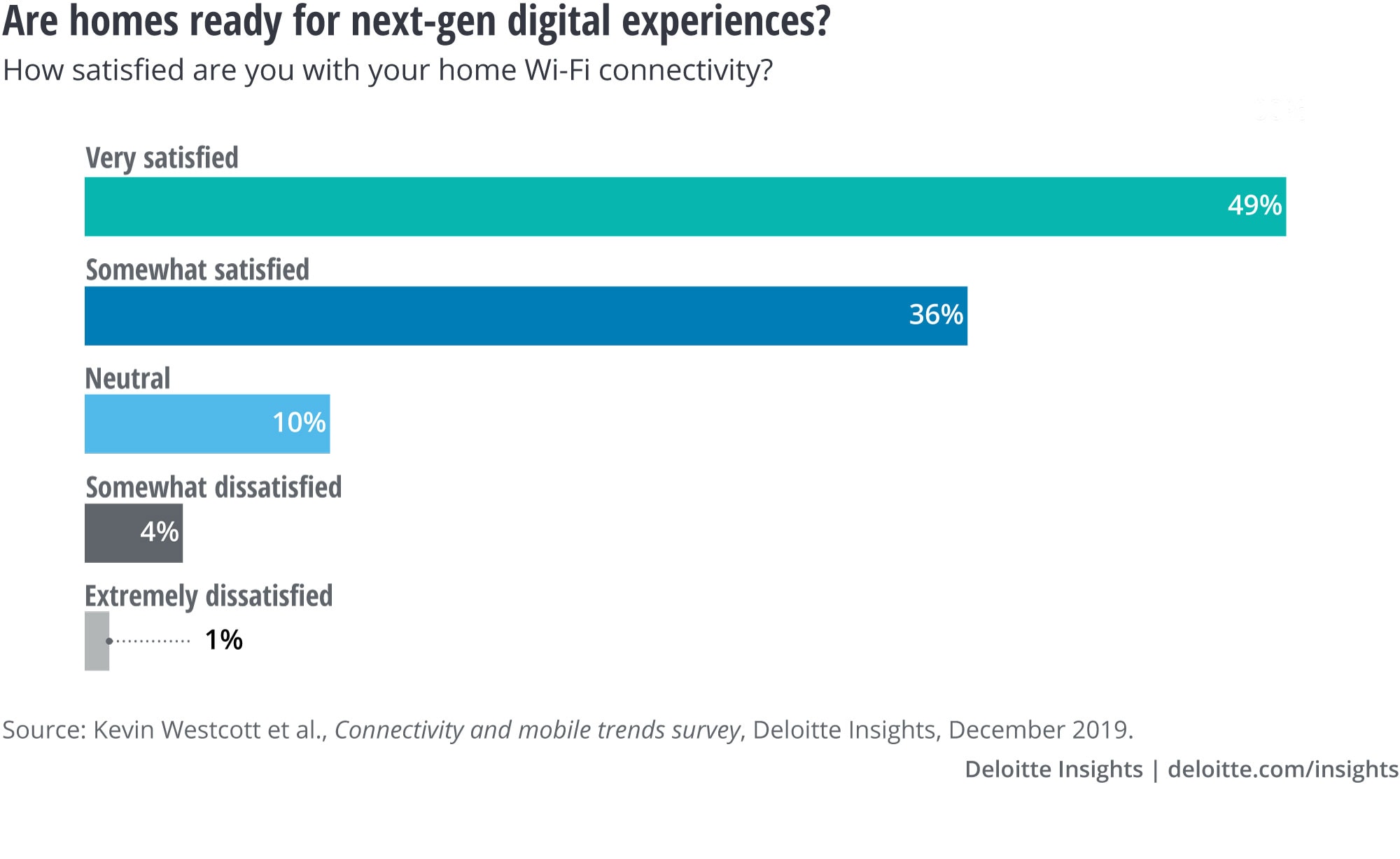Can 5G unleash next-generation digital experiences in the home? Cloud gaming may be the next big test
3 minute read
23 April 2020
Carriers were already under pressure, with consumers not universally satisfied with their bandwidth. The advent of cloud gaming will only add to the demand. Will 5G connectivity help providers meet rising expectations?

Deloitte’s Connectivity and Mobile Trends Survey found that less than half of US consumers are “very satisfied” with their home connectivity, with another 36 percent only “somewhat satisfied.”1 This highlights some of the challenges that connectivity providers face in keeping up with fast-increasing demand from bandwidth-hungry devices:
- Only 30 percent of US homes have access to high-speed fiber connectivity.2
- American homes now have an average of 11 devices competing for internet bandwidth. The largest bandwidth consumer is the television, now serving more streaming video than traditional broadcast TV.3
- 35 percent of consumers enhance their home connectivity with range extenders and Wi-Fi mesh networks.4
Learn more
Explore the Thinking Fast series library
Subscribe and never miss a charticle
Learn about Deloitte’s services
Go straight to smart. Get the Deloitte Insights app
There’s a fourth element placing greater demands on networks: bandwidth-hungry experiences that are moving into the home, led by streaming video. In 2019, fully 60 percent of downstream internet traffic was from video.5 And people are uploading more video as well, with the acceleration of live-streaming.6 While much has been made of next-generation technologies like augmented and virtual reality (AR/VR), comparatively few consumers are using these at home.7 However, the global video gaming industry is gaining more home entertainment time with interactive experiences that often include multiplayer connectivity, gaming services, and social streaming. Now, two of the world’s largest digital platform companies are working to stream video games over the internet instead of running them locally on devices.8
Cloud gaming services may take an ever-larger share of video game delivery,9 putting more pressure on networks. By comparison, streaming video providers typically recommend 1.5 Mbps or closer to 25 Mbps for 4K screens. Cloud gaming services require 10 Mbps downstream, or a steady 35 Mbps to render at 4K. At around 15.75 GB per hour, this can stress a 1TB per month plan.10 As the sector matures, game developers may find ways to use more bandwidth.
Existing cable speeds can meet the downstream requirement of the home, but cloud gaming also demands upstream performance. Unlike streaming video, gameplay is interactive and often requires very low latency—that is, the time between a gamer’s input and the resulting response in the game. 5G could expand this capacity but ultra-reliable low-latency communications will likely require additional edge computing infrastructure. Notably, the biggest cloud gaming providers also operate content delivery networks that bring content closer to users.
Offering up to 4 Gbps of bandwidth over the air and dynamically managing connectivity for many more devices, 5G could unleash cloud gaming and other emerging digital experiences.11 Deloitte’s survey found that nearly 40 percent of younger respondents said 5G would change how they use AR/VR. With fiber reaching around 30 percent of US homes, it’s possible that 5G penetration could be broader. In Deloitte’s survey, 63 percent of consumers said the top reason to adopt 5G is for better connectivity inside the home.
5G could bring speeds as good as cable or fiber, with greater control over quality of service inside the home. But it could also enable providers to meet consumer’s growing desire to watch and share video, while building capabilities for next-generation media and entertainment experiences: AR, VR, cloud gaming, and beyond.
More from the Technology collection
-
The changing face of North America’s tech ecosystem Article5 years ago
-
M&A premiums surge as pool of targets subsides Article5 years ago
-
Tech Trends 2025 Article5 months ago
-
TMT Predictions 2025 Article5 months ago
-
Talent and workforce effects in the age of AI Article5 years ago











